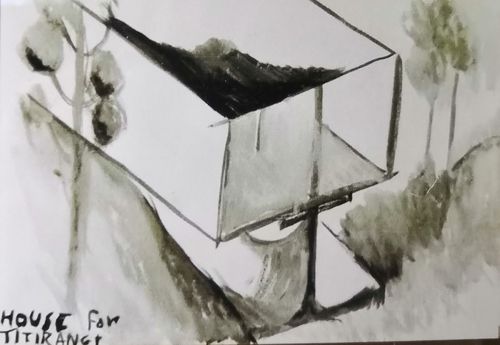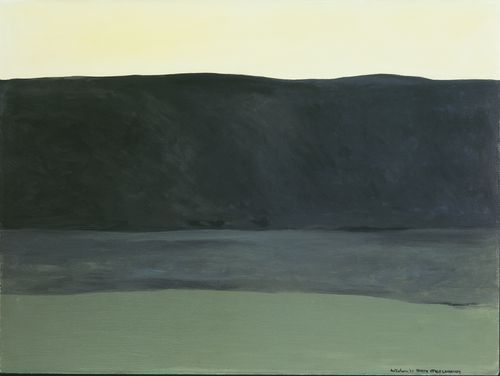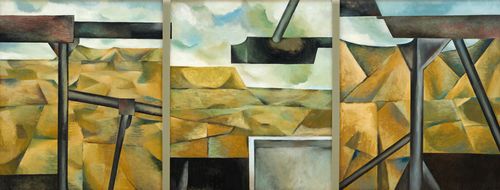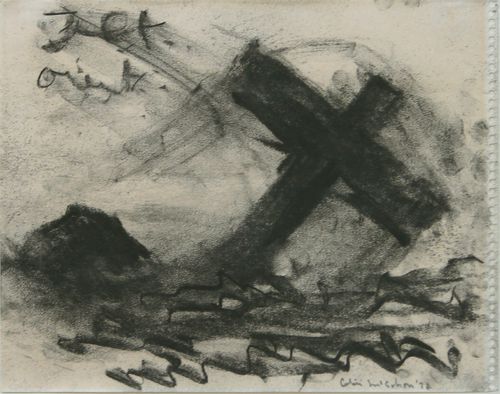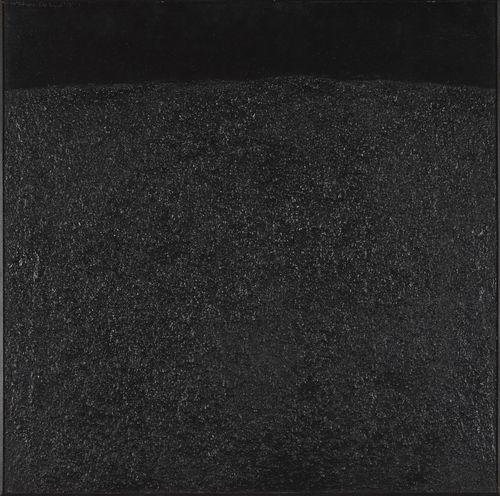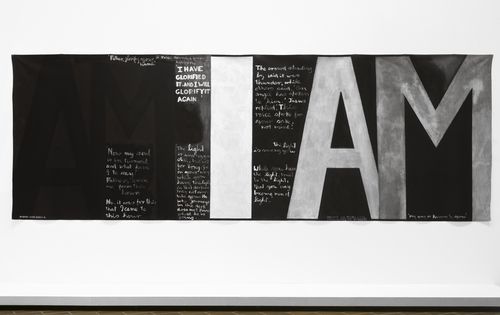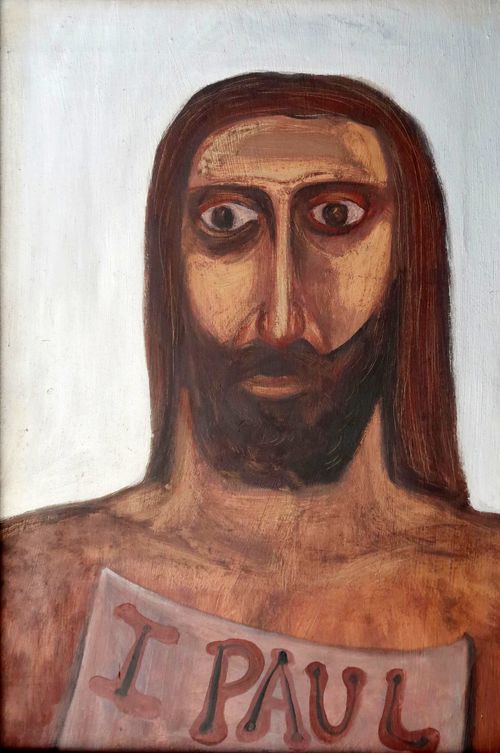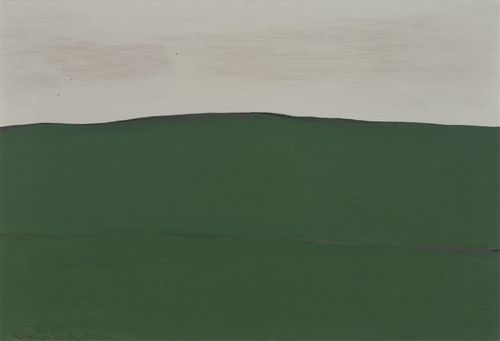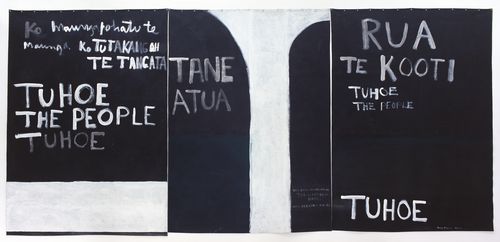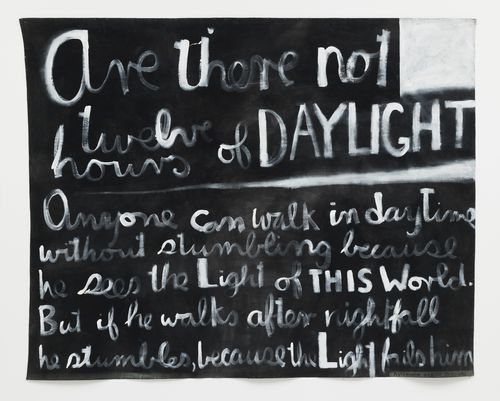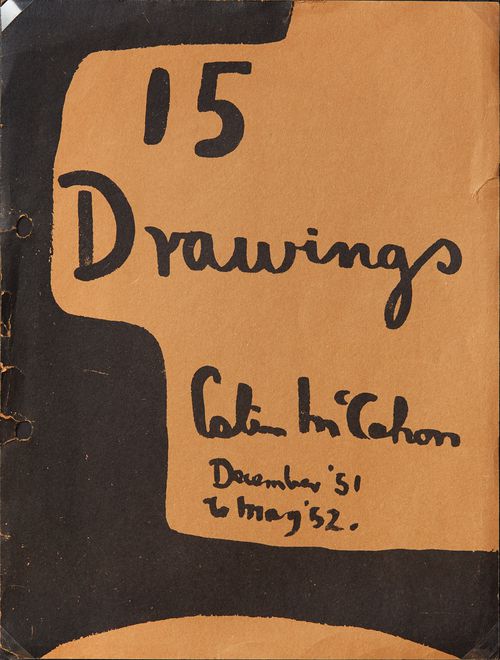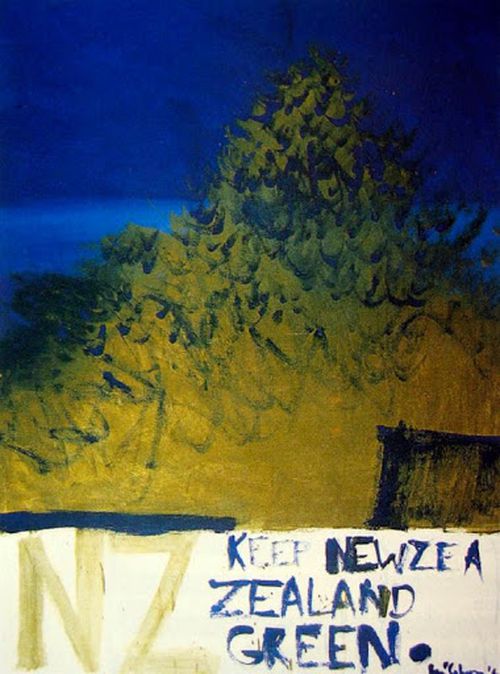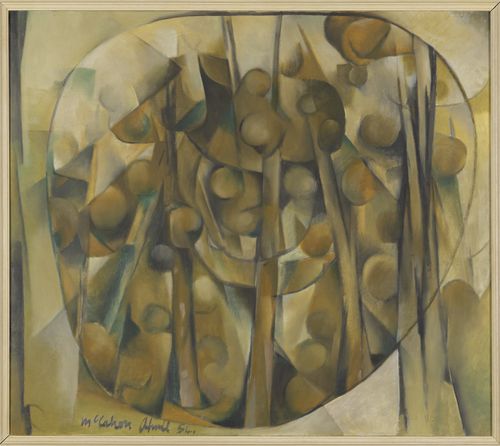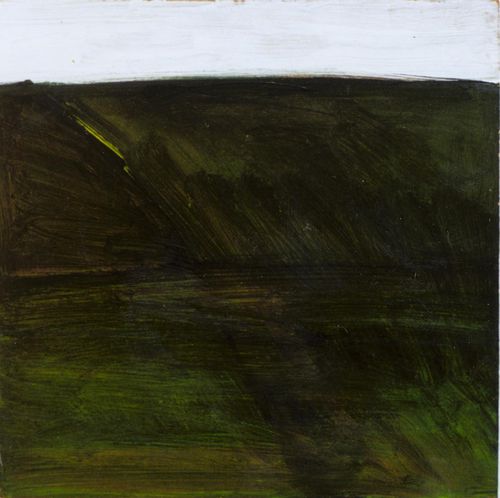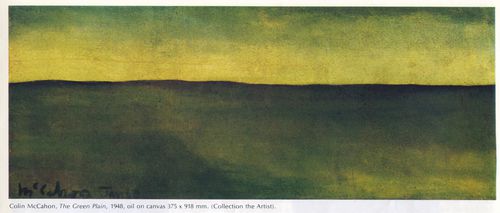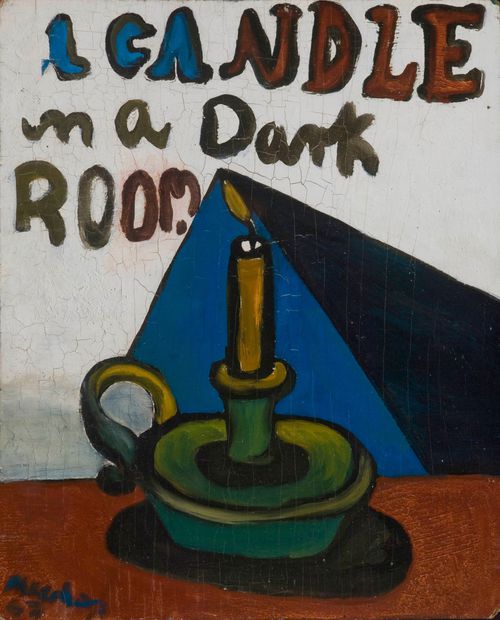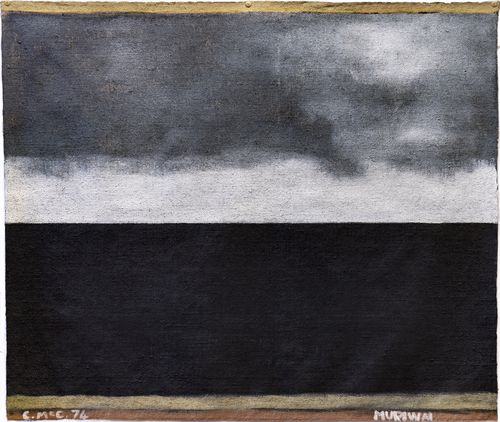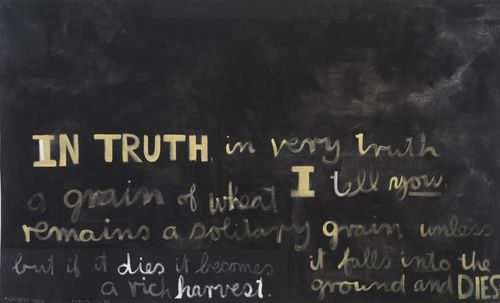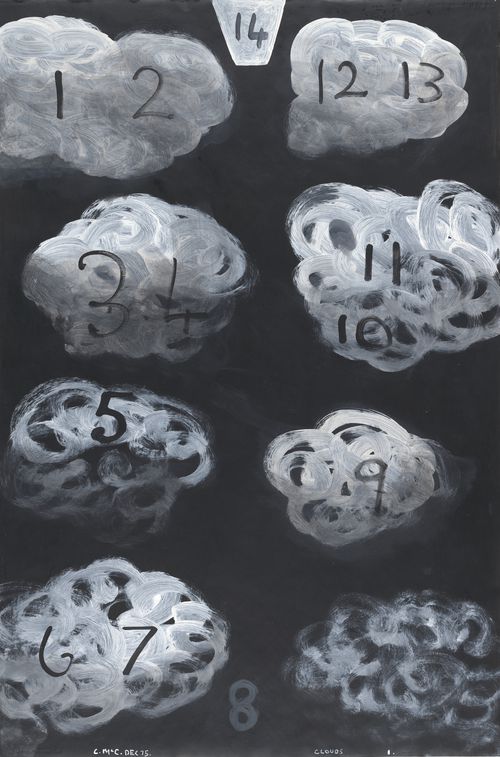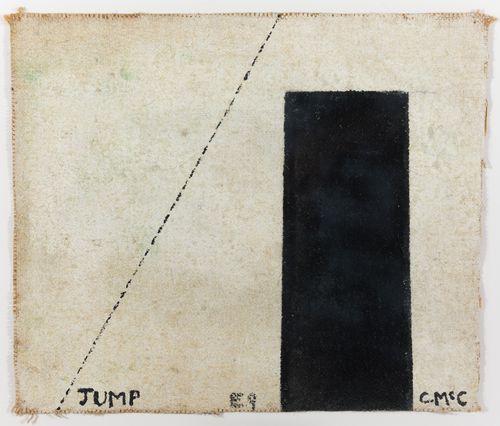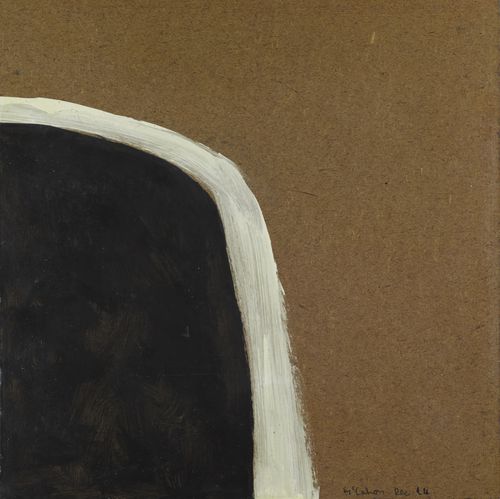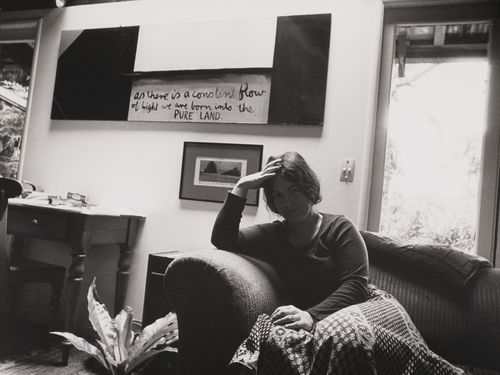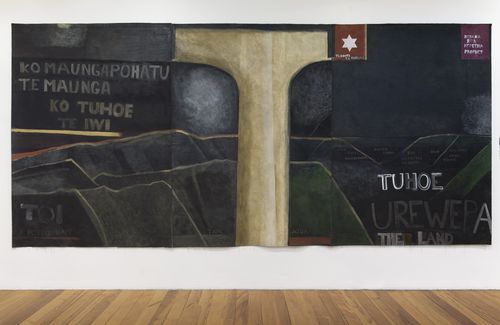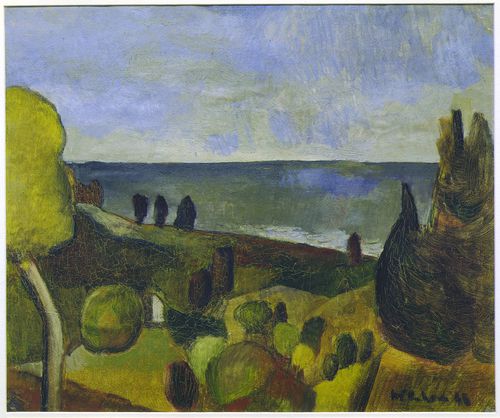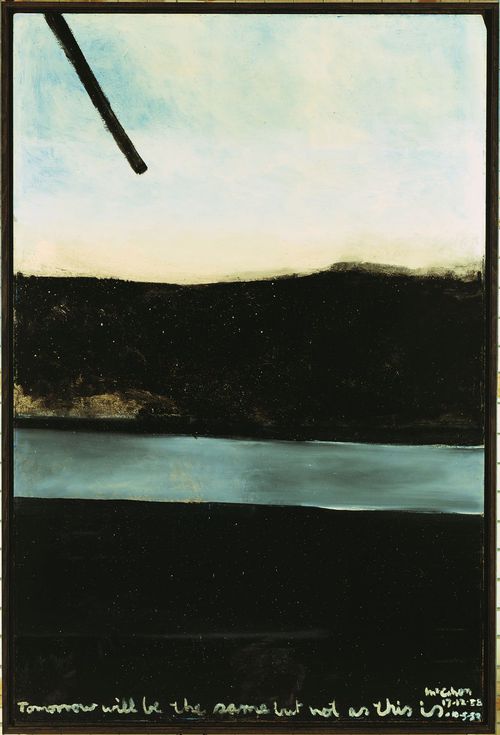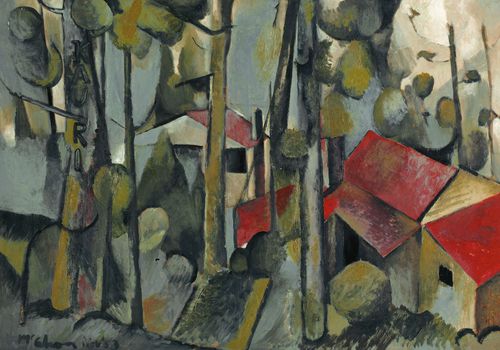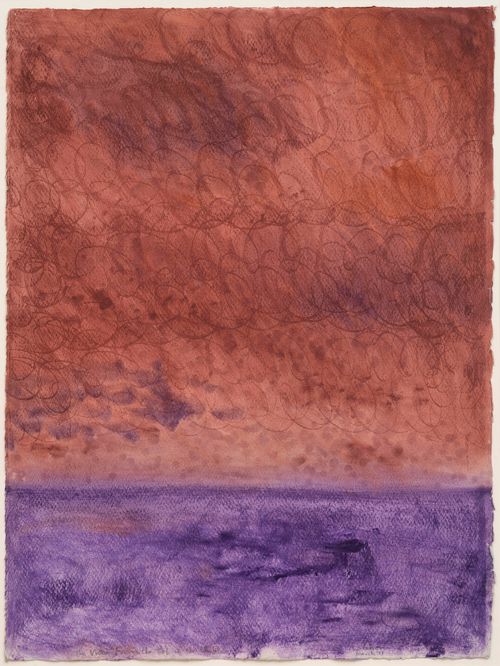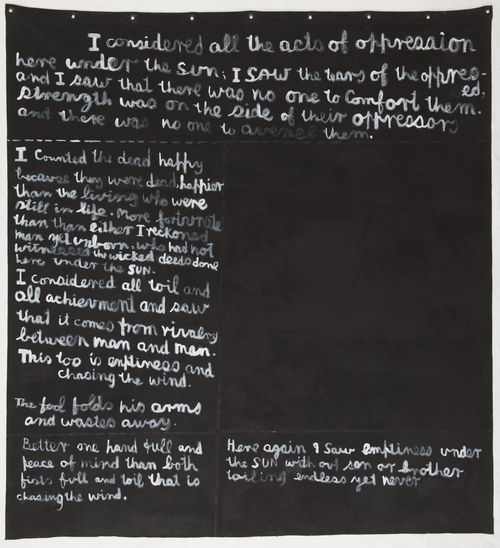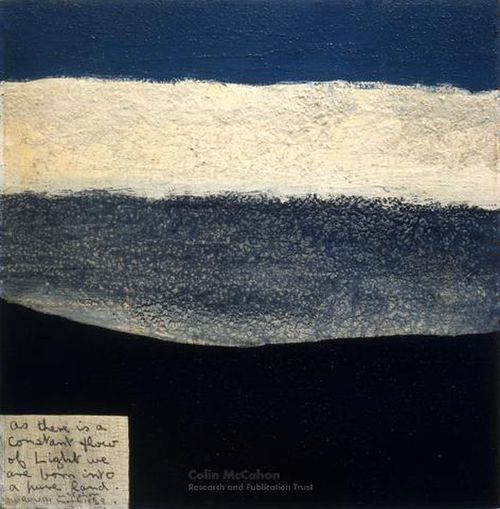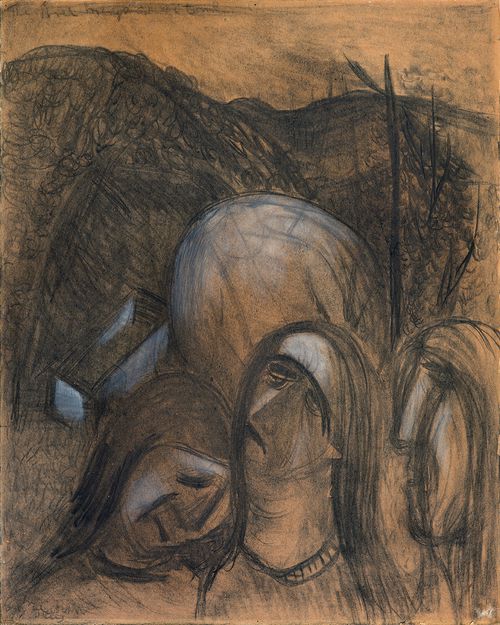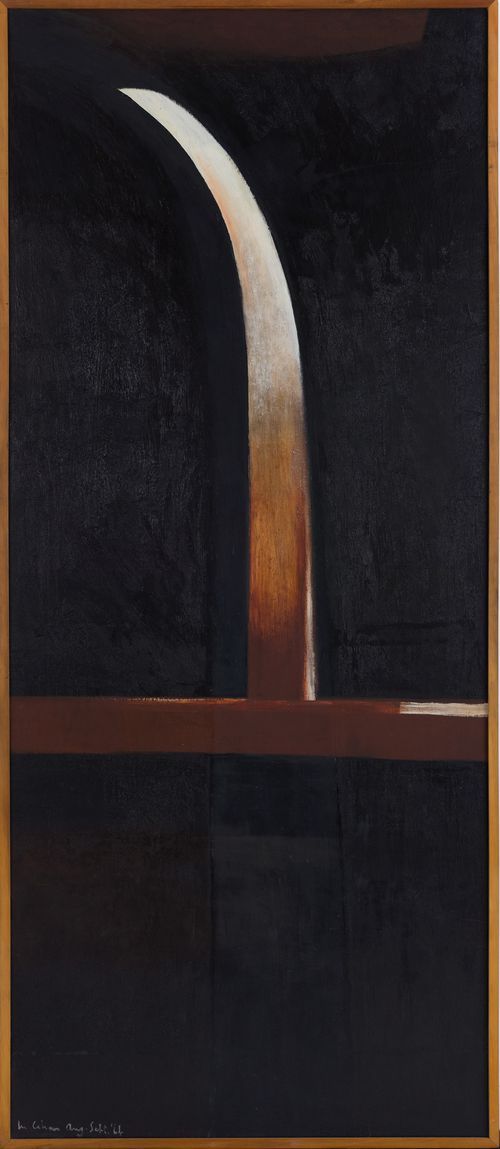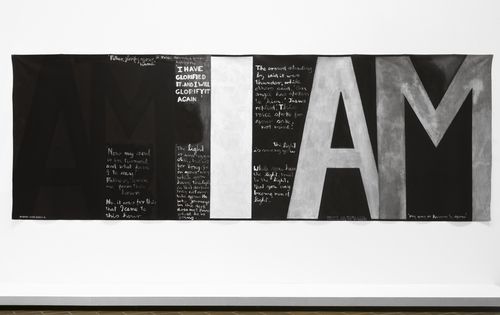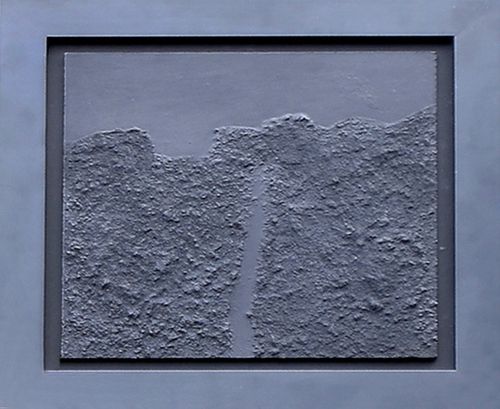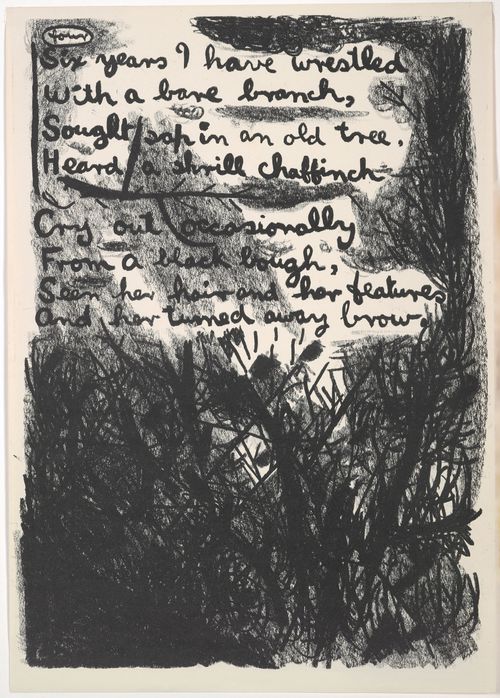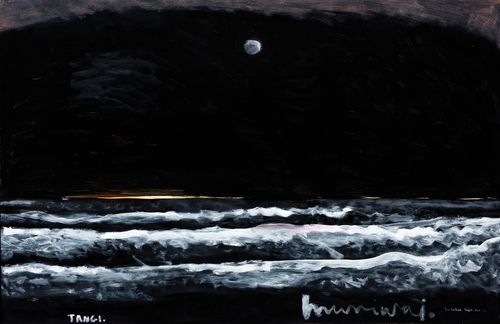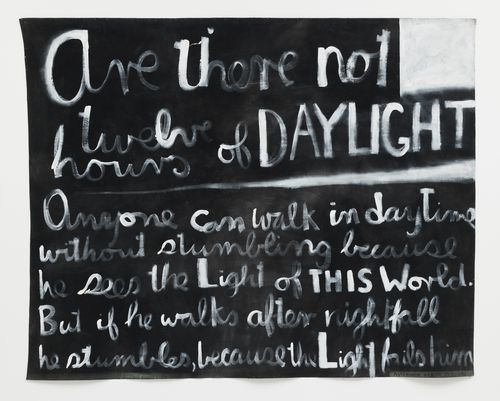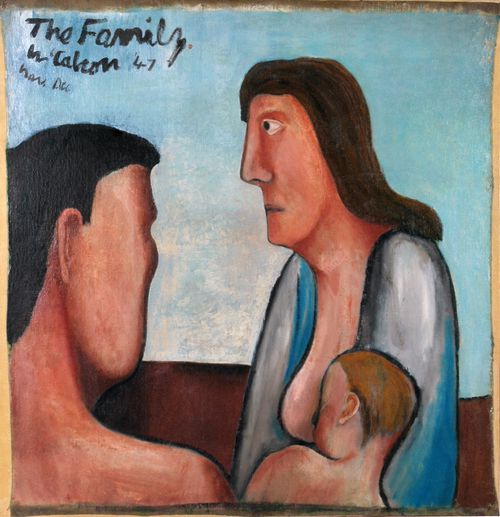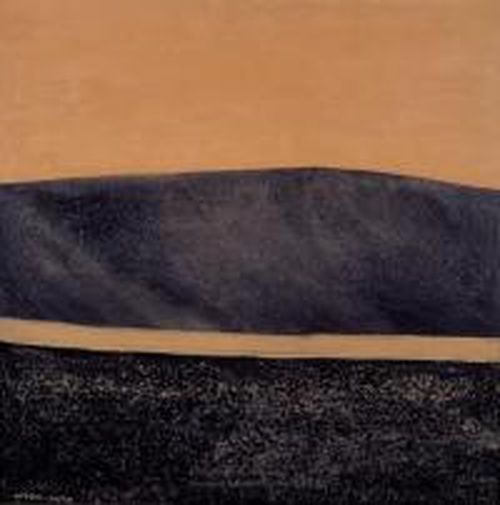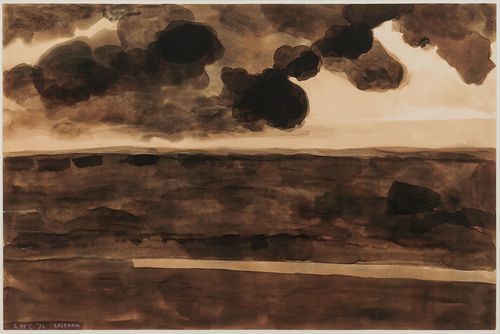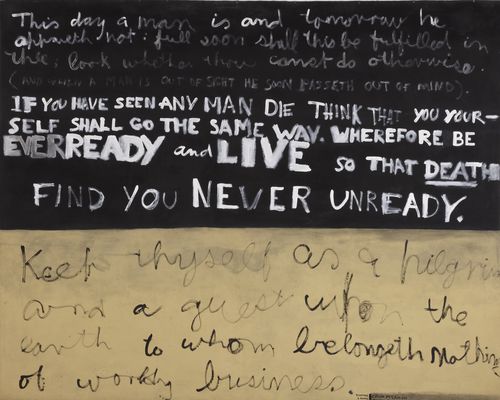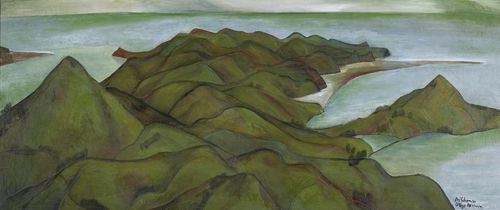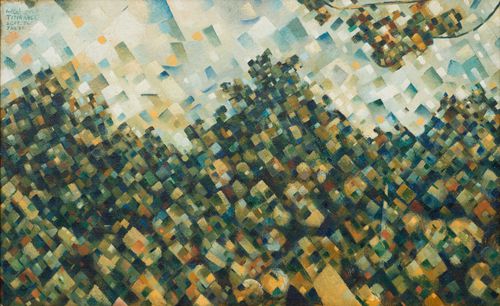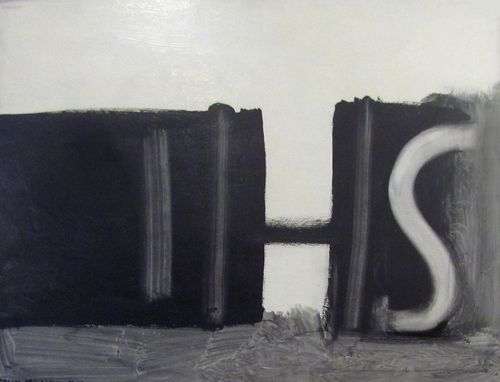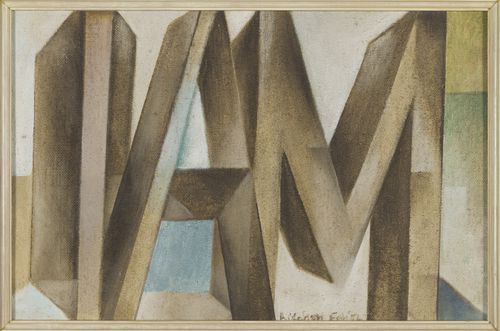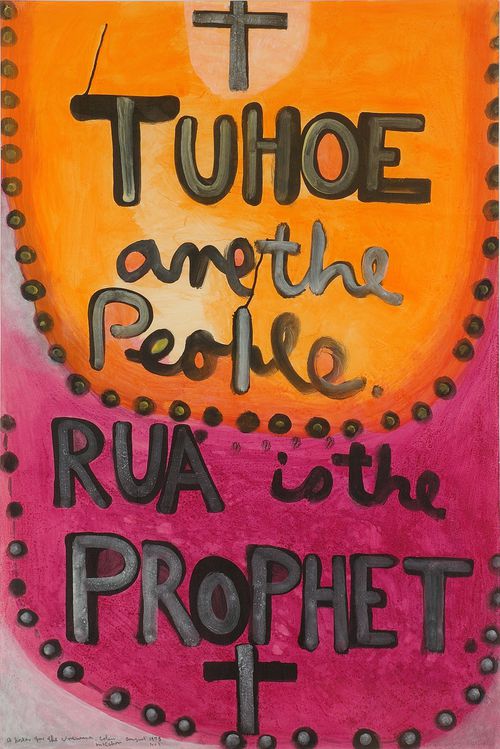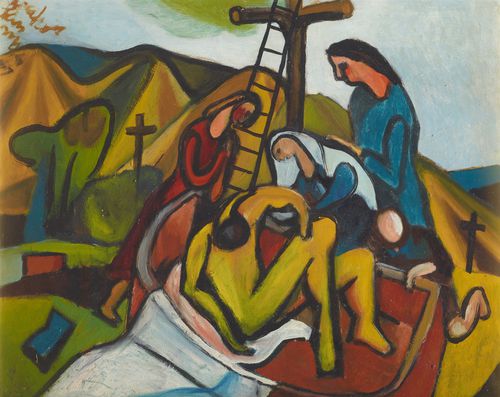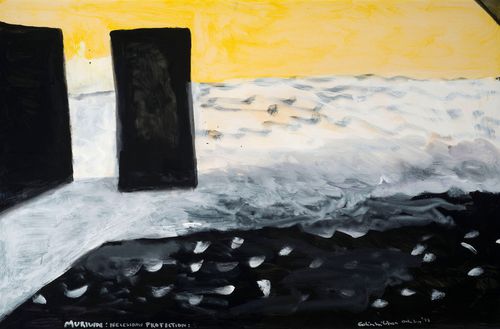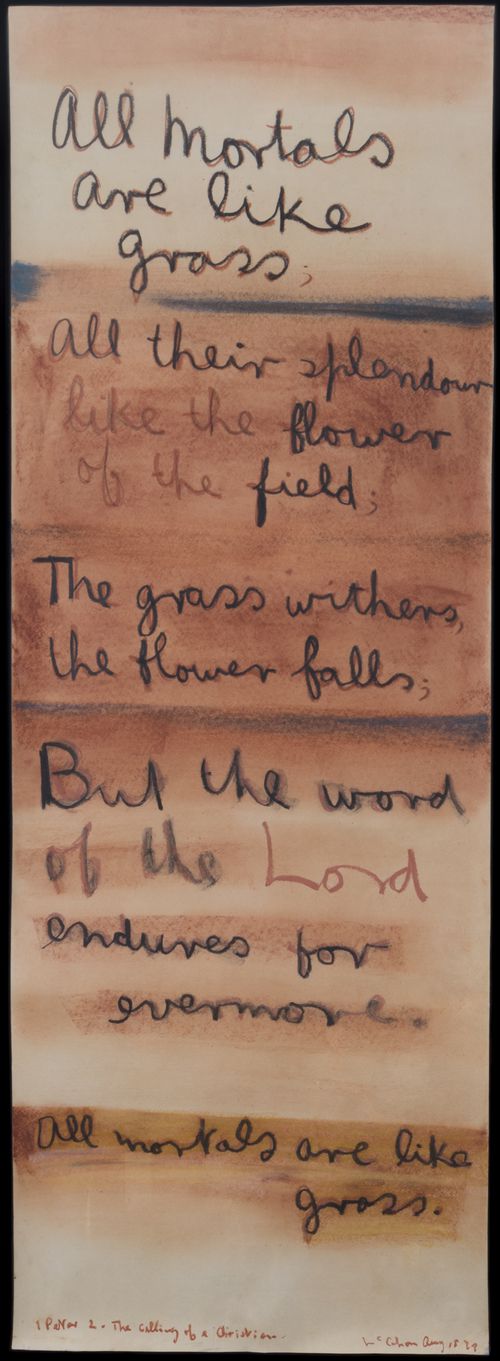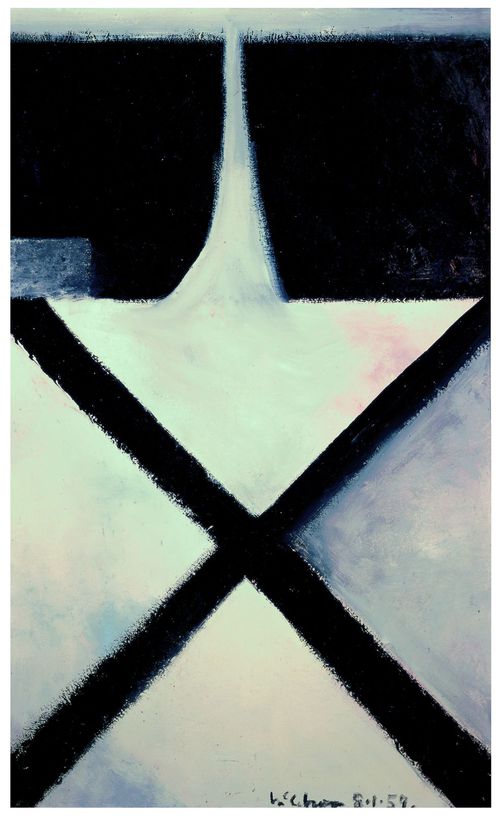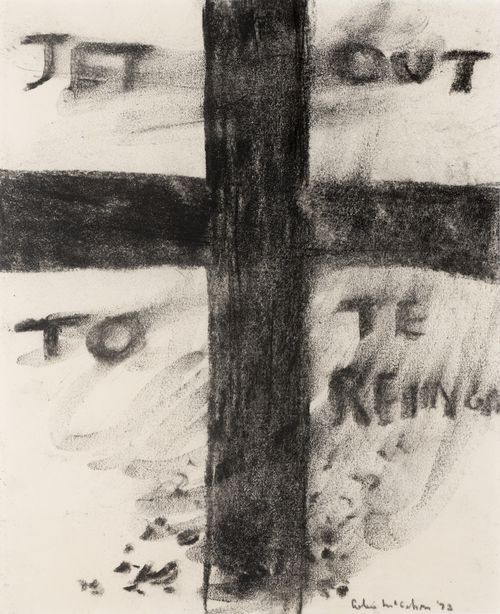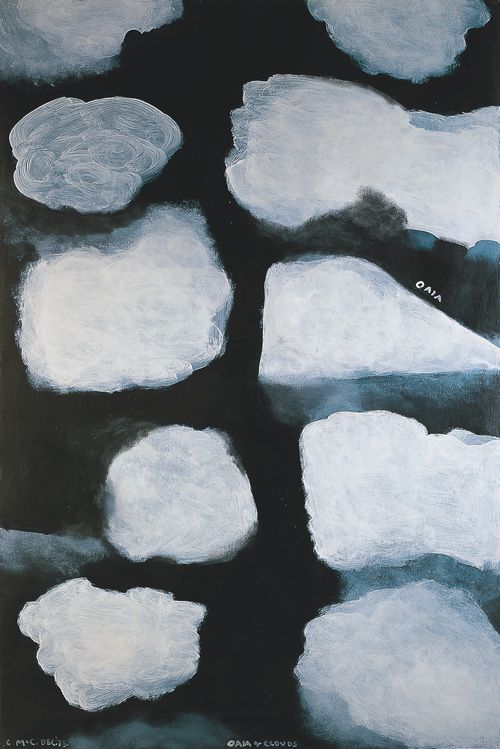The House Protects the Dreamer
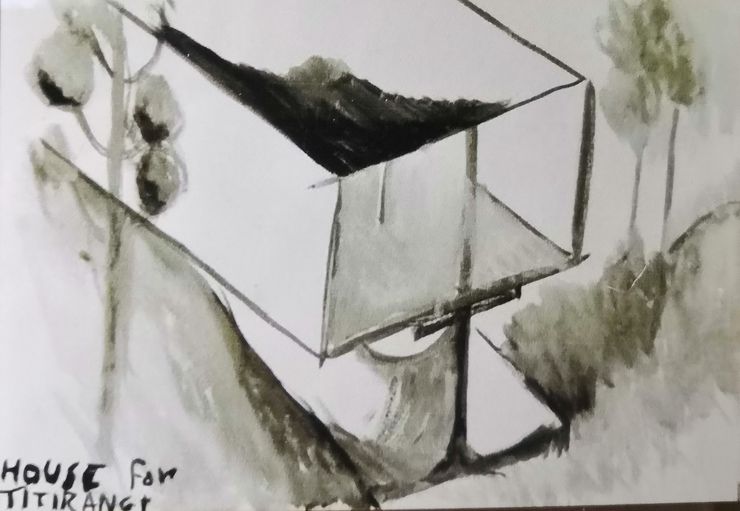
Imaginary studio drawing by Colin McCahon circa 1955

Barry Millar, Colin McCahon on the balcony of his French Bay home with friends, 1957. From Left: Diana Millar, Colin McCahon, Anne McCahon, Peter Tennant, Pat Hanly and Connie Larson
Bridget Riggir-Cuddy
Down the steep path of 67–69 Otitori Bay Road, inhabiting a small kauri grove, are two artists’ houses. The small cottage where Colin McCahon and his family of six lived during the 1950s sits next door to a contemporary, purpose-built structure: the Parehuia residency space, a house and studio that accommodates a seasonal timetable of contemporary artists.
The McCahon’s Titirangi home has operated as a public museum since 1998. Refurbished and installed with interactive media displays, the building is now a heritage site, preserved, protected and open to the public. The Parehuia Artists’ Residency opened next door in 2006, and has since had 41 ‘emerging/-mid career’ artists pass through its doors. The establishment—the residency programme and the building—provide artists with the space, time, and financial stability to focus on their practice.
At the Titirangi address, these two buildings sit at a literal and figurative convergence of past and present, public and private, life and work. Taken as a whole, 67–69 Otitori Bay Road both discloses the artist’s way of living and holds it tight. More often than not, art’s audience is positioned in view of the outcome of an artist’s inner activity. Through traditional gallery display, the artwork is severed from the labour and the life that produced it. This site, a nexus of an historic artist’s home and a contemporary residency, provides scope to consider the hidden conditions of an artist and their artwork.
With a significant lineage of exhibitions, books, scholarship, and organisations dedicated to his work and life, McCahon is perhaps Aotearoa’s most mythologised artist. In his ascension to the position of public cultural figure, our understanding of McCahon’s inner life—what we may infer from his day-to-day conditions—has informed our understanding of him as an artist. Unlike our contemporary living artists, McCahon’s means and foundation of practice are preserved in the social consciousness. This is some of the work done by the McCahon House Museum, which, through maintaining the house, gives voice to the artist’s social context, in addition to his artwork.
By sharing the same ground as a contemporary artist’s residency, the function of the museum becomes a site of not only preservation, but also activation. As a spectator, we may enter the public museum but only view the residency building from a measured distance. We can witness the material conditions of Aotearoa’s most prominent artistic figures, but, by necessity, the residency space is not open in the same way. 67 Otitori Bay Road acts then as a kind of diagram, displaying the material conditions of a historicised artist while functioning to provide those same material conditions to a contemporary artist. From what is displayed, we might be able to infer what is kept from us.
The house is a site that circumscribes the most humble and ordinary activities of our lives. The house is where we eat, sleep, care, and maintain. It is a private space, shaped by our needs of nourishment: sustenance, shelter, family, solitude. The structure of the house provides retreat from our public lives; where we can withdraw to give space to our mundane rituals and mundane states of being. ‘The house shelters day-dreaming, the house protects the dreamer, the house allows one to dream in peace’, writes Gaston Bachelard in The Poetics of Space.1 The house is then a symbolic and physical structure that shapes our inner lives, one that sits in opposition to our place of work. In analysing Walter Benjamin’s account of the emergence of this type of interior during the industrial revolution—as a place distinct from the reality of labour—critic Kirsty Bell writes:
… this historical interior, untouched by the burden of work (where the tasks of maintenance, household work and childcare were taken care of by other hands), was a place connected to the imagination, a realm within which the private individual (almost certainly male) was free to indulge in the luxury of illusion.2
The evolution of economy, technology, gender roles and the nature of labour has blurred the distinction between domestic space and workplace. For the artist, however, this distinction has always been somewhat unclear. As Bell writes in The Artist’s House: from Workplace to Artwork, the artist’s home is—out of necessity, financial or creative—traditionally a space where their work is done. For the artist, the act of dreaming is work in itself.
Between the floor plan of the McCahon cottage, its physical remains, and the narratives that come with it, we might intuit the rhythms and moods of the family’s life. In the paces between the kitchen sink and where the dining table sat; in the incline of the garden path; in the breadth of the windows that let in the shifting tones of harbour weather. We know this as the place where Colin and his wife Anne raised their children, where they both produced artwork, where their contemporaries met and stayed. The architecture maps the family’s daily activities, their economic and social positioning, and how these cumulatively shaped McCahon’s practice.
It was from the house and from Titirangi that McCahon learnt to see and paint Auckland, the subtropic urban ecology so antithetical to his southern homeland. While living here, McCahon was employed by the Auckland Art Gallery, where he also held a studio space in the building’s attic. Affected by his fixation on the environment, the long journey to his city studio, and assumed familial obligations, McCahon produced artwork from home. Here, the contingencies of both private life and landscape seeped into his practice, the outside ‘let in’.
As workplace and domestic space, the house became a conduit to McCahon’s painting— a mechanism that let in and kept out. Alongside its affordability, the property was likely chosen by McCahon for its porosity, its embeddedness within the landscape. McCahon went on to modify the building, opening it up to the landscape and light. Adding a deck (where McCahon worked on paintings), a large ‘Mondrian style’ window panel, and turning the dimly lit street-level garage into a studio space, McCahon adapted the architecture to suit the needs of his painting and family. In this way, the house museum can be read sculpturally as a McCahon: a complex series of inlets and boundaries, a device with which the artist mediated sights and experiences, the exterior world and the interior one essential to his practice.
Since McCahon’s time, the arts have undergone a process of systematisation and professionalisation. Contemporary financial exigencies have split the artist’s time between work and the productive labour of artistic practice. In New Zealand, it is now common practice for artists to rent studio space, though they are likely outnumbered by those who work from home. An established ecology of artist-run-initiatives, public and commercial galleries provide the occasional and brief respites of financial and cultural support to those who successfully balance work and practice. This precarious ecology, which only developed in the latter stages of McCahon’s career, has come to define the contemporary condition of the arts in New Zealand. While the Parehuia residency is undoubtedly a component of the arts ecology, it also provides artists with space and time outside of it.
The programme and dwelling of a residency clear a temporary space outside of the pressurised nexus of artworld networks and daily living. Within this space, artists are provided with the material conditions of artmaking. The spatial and financial freedom afforded by a residency allow artists to occupy the singular role of artist, in both life and work. Rather than valuing the outcome of the artist’s productive activity—the artwork or exhibition—the space of the residency values and sustains the inner life of the artist. At the Parehuia residency, artists have the opportunity to exist outside their habitual and cognitive maps, outside the geographies of home and the workplace, away from the city and those systems that favour the outcome of artistic production over the conditions of production.
The architecture of the Parehuia residency space replicates the inlets and boundaries of McCahon’s former home. Within this space, residents exist as McCahon did, sharing a porousness of interior and exterior, along with the rhythms and moods particular to life there. McCahon’s legacy has afforded a greater emphasis on the material needs of practitioners: unlike McCahon’s home, the living space of the residency is adjoined to a large work space. Replicating the white cube structure of exhibition spaces, the studio is equipped with the trappings of a contemporary practitioner: natural and artificial light, a sink, and a door sizable enough for large works to pass through. Though the conditions of artistic practice have shifted greatly since McCahon’s era, the primary needs of the artist remain much the same.
The McCahon House Museum and the Parehuia Residency is a site that diagrams shifting historical conditions, and how the artist lives and makes under these conditions. In connecting this past and present, the site makes claim to the permanent need for the material conditions of the artist, which, as for us all, are the time and space of the interior.
Barry Millar, Colin McCahon on the balcony of his French Bay home with friends, 1957. From Left: Diana Millar, Colin McCahon, Anne McCahon, Peter Tennant, Pat Hanly and Connie Larson
Imaginary studio drawing by Colin McCahon circa 1955
1. Gaston Bachelard, The Poetics of Space, trans Maria Jolas (Boston: Beacon Press, 1969), p. 16.
2. Kirsty Bell, The Artists House: from Workplace to Artwork (Sternberg Press, 2013), p. 9.
